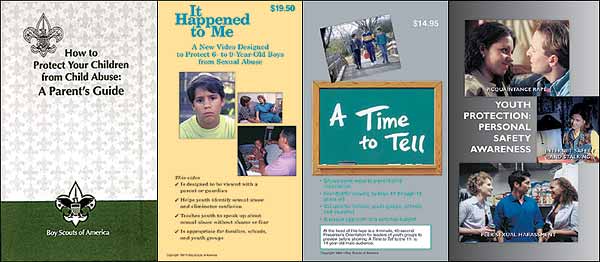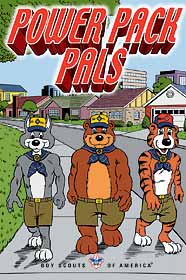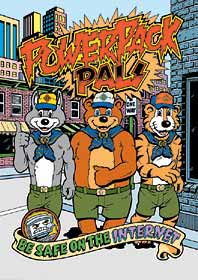April Is Youth Protection Month
The BSA urges units to conduct Youth Protection programs in April and to share Scouting's outstanding resources, which are available for all age-groups, with the community at large.
April is National Child Abuse Prevention Month, and for the fourth consecutive year the Boy Scouts of America has designated April as Youth Protection Month for councils, units, families, and community organizations.
During April, local councils will conduct youth protection training for youth and adults and, as a community service, offer youth protection training to other local youth-serving agencies.
The BSA is committed to making the Scouting environment as wholesome as possible for youth members and adult volunteers. Since 1988, the BSA has provided adult and youth training that addresses the problem of child abuse and, at the same time, helps Scouting continue to provide a safe environment and meet high standards of leadership for our youth members.

Web-based adult training
Since January 2003, BSA tour permit policy requires at least one youth protection-trained leader on all trips and outings requiring a tour permit. Completion of either online youth protection training (see below) or the traditional youth protection training course meets this requirement.
"Youth Protection Guidelines for Adult Leaders and Parents" is a Web-based training program for leaders and parents available through council Web sites.
Individuals simply access the Youth Protection Online section of a participating council Web site and begin the training. (Check with your council for availability.)
The user-friendly online session does not require a high level of computer literacy and takes about 30 minutes. It covers the different kinds of abuse, signs and symptoms of abuse, strategies of a molester, Boy Scout Youth Protection policies, and reporting requirements for leaders.
A volunteer who does not have a home computer can take the training online at a public library or other location where Internet access is available to the public.
After completing the training, registered Scout leaders receive a certificate of completion, letter from the Scout executive, council youth protection reporting procedures, and a course information handout. Other adults receive everything except the certificate of completion.
Councils can make the training available to others in the community by sharing access information with organizations such as churches, schools, and other youth-serving organizations.
Videos and comic books
For youth, a variety of tools, including award-winning videotapes, communicate with young people about protecting themselves against all forms of abuse.
"It Happened to Me" (BSA No. AV-09V011) is designed for Cub Scouts (boys ages 6 to 10) to view with their parents or guardians. It presents five scenarios of high-risk situations that boys may encounter and establishes safety rules that help boys counteract the fear and shame that can result from potentially abusive situations.
"A Time to Tell" (No. AV-09V004) is designed for Boy Scouts (boys ages 11 to 14) and depicts the risks of sexual abuse through dramatizations of adolescent experiences.
"Youth Protection: Personal Safety Awareness" (No. AV-09V027) is for young adults (boy or girl, ages 14 to 20). Vignettes deal with the issues of acquaintance rape, Internet safety, stalking, and fraternization. Each scenario is followed by instructions for group discussions and a teen panel discussion, with pertinent advice regarding each situation.
Another tool is "Power Pack Pals" (No. 33980 and No. 33981), a comic book series that illustrates to Cub Scout-age boys the harm that bullying may cause and how to be safe when using the Internet.
BSA resources have been widely used—inside and outside Scouting. To obtain copies, contact local council service centers.

Unit ParticipationDuring Youth Protection Month, individual packs, troops, teams, and crews are encouraged to participate in one or more ways: Ensure that unit adult leaders have taken youth protection training. Discuss with youth in a unit meeting the exercises found in How to Protect Your Children From Child Abuse: A Parent's Guide, the pull-out pamphlet in the front of each youth and adult handbook. 
Present age-appropriate video-based training with the meeting guide to youth and parents. In packs, also distribute and discuss the "Power Pack Pals" comic books. |
March - April 2004 Table of Contents
Copyright © 2004 by the Boy Scouts of America. All rights thereunder reserved; anything appearing in Scouting magazine or on its Web site may not be reprinted either wholly or in part without written permission. Because of freedom given authors, opinions may not reflect official concurrence.